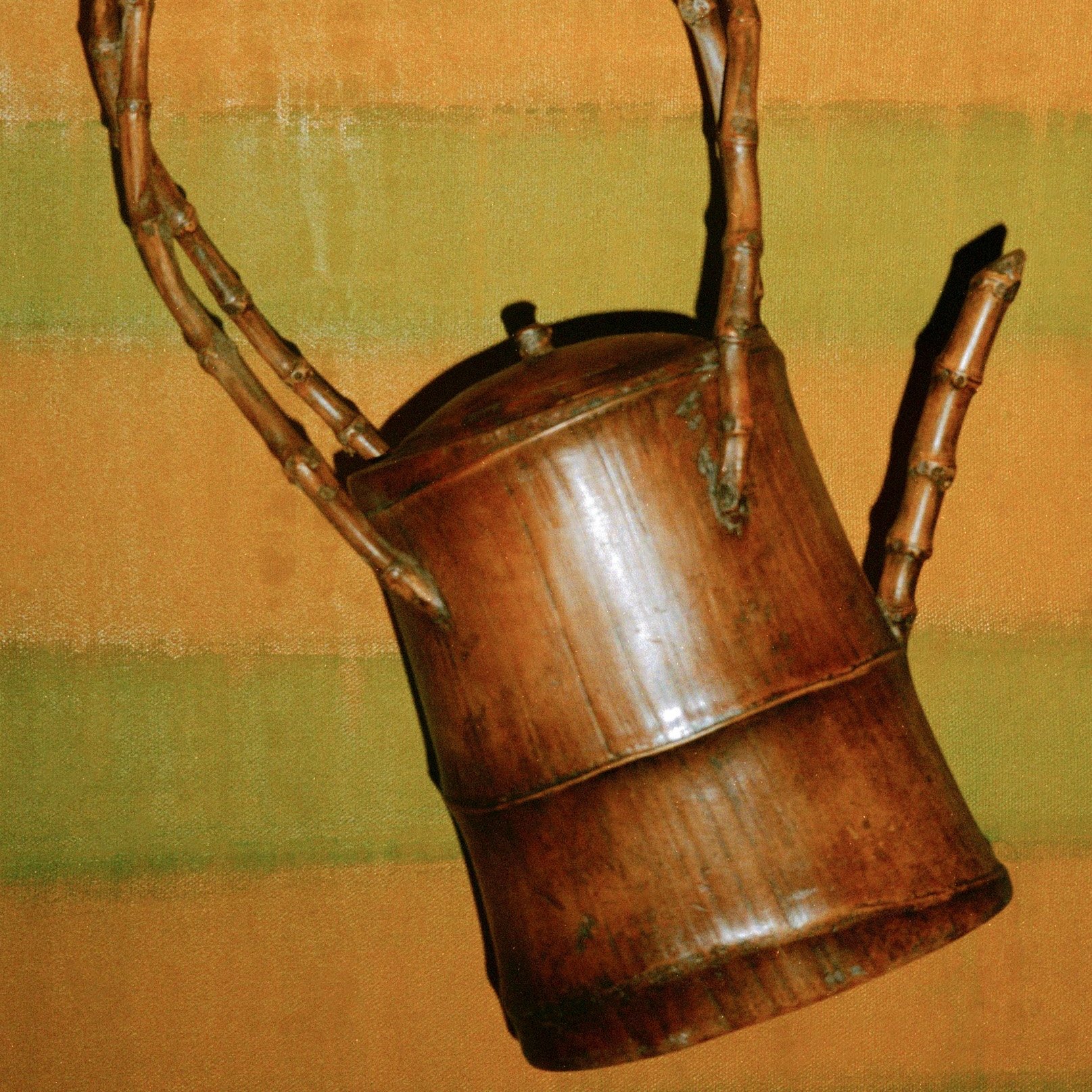Vase-pichet à décor cubiste, Geneviève de Cissey
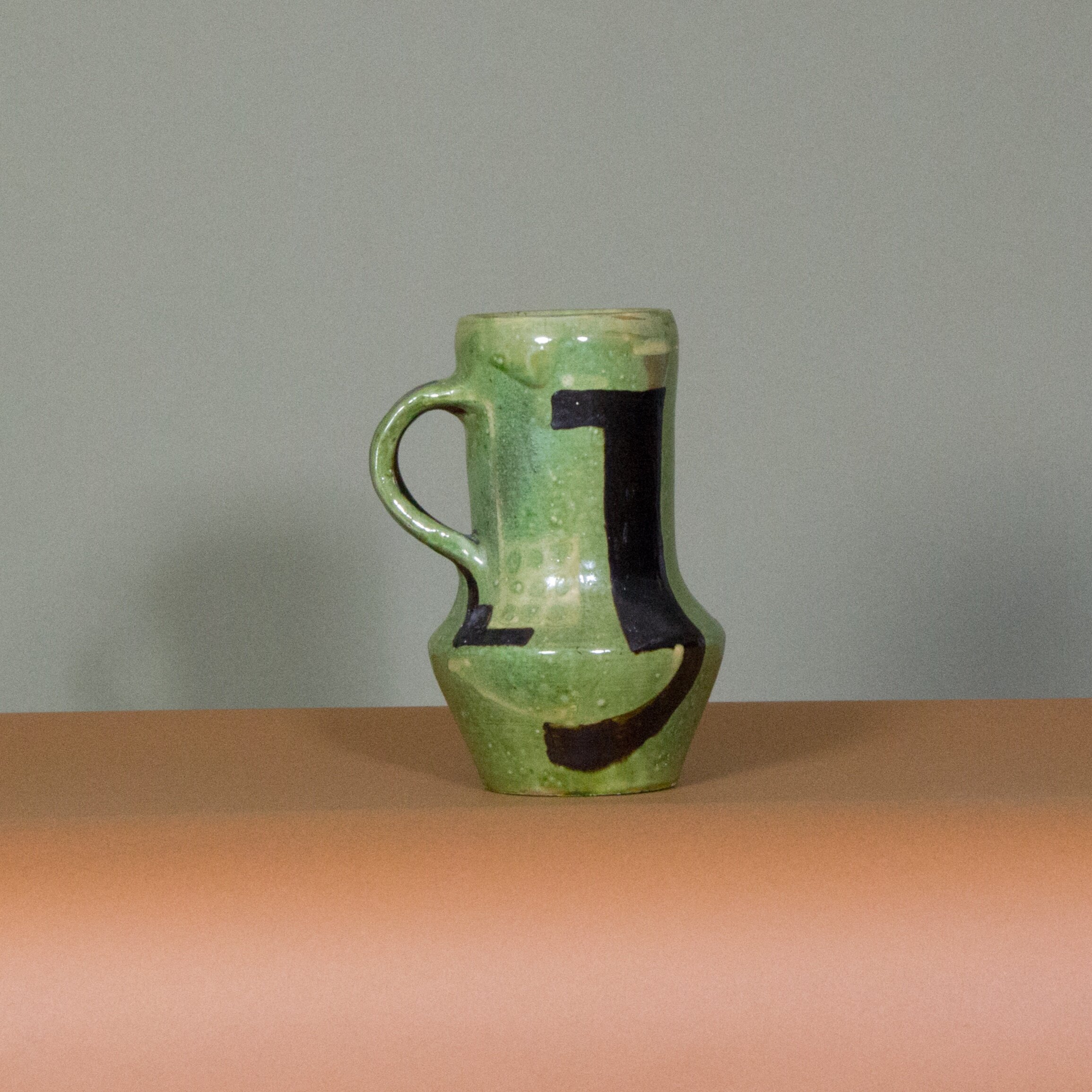
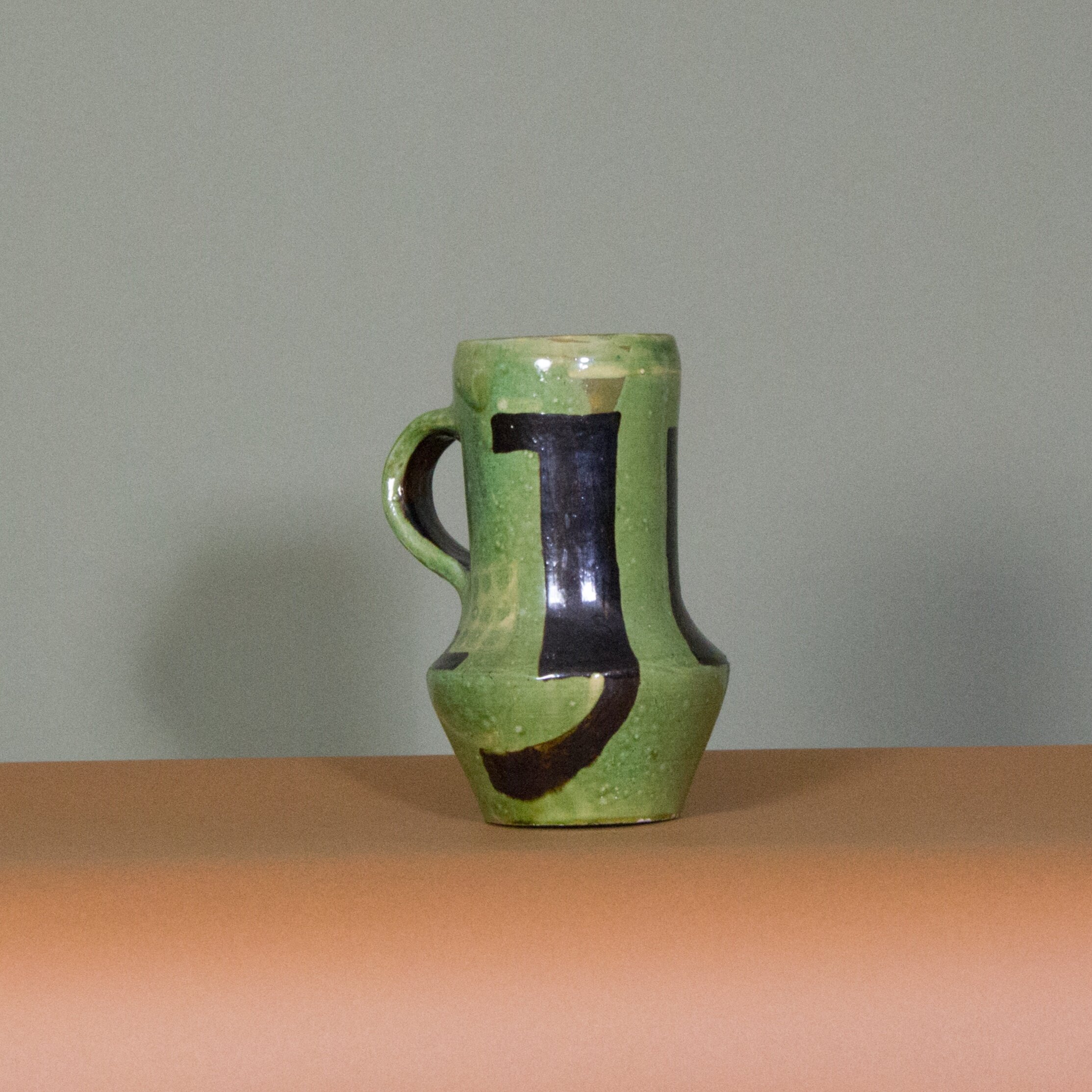
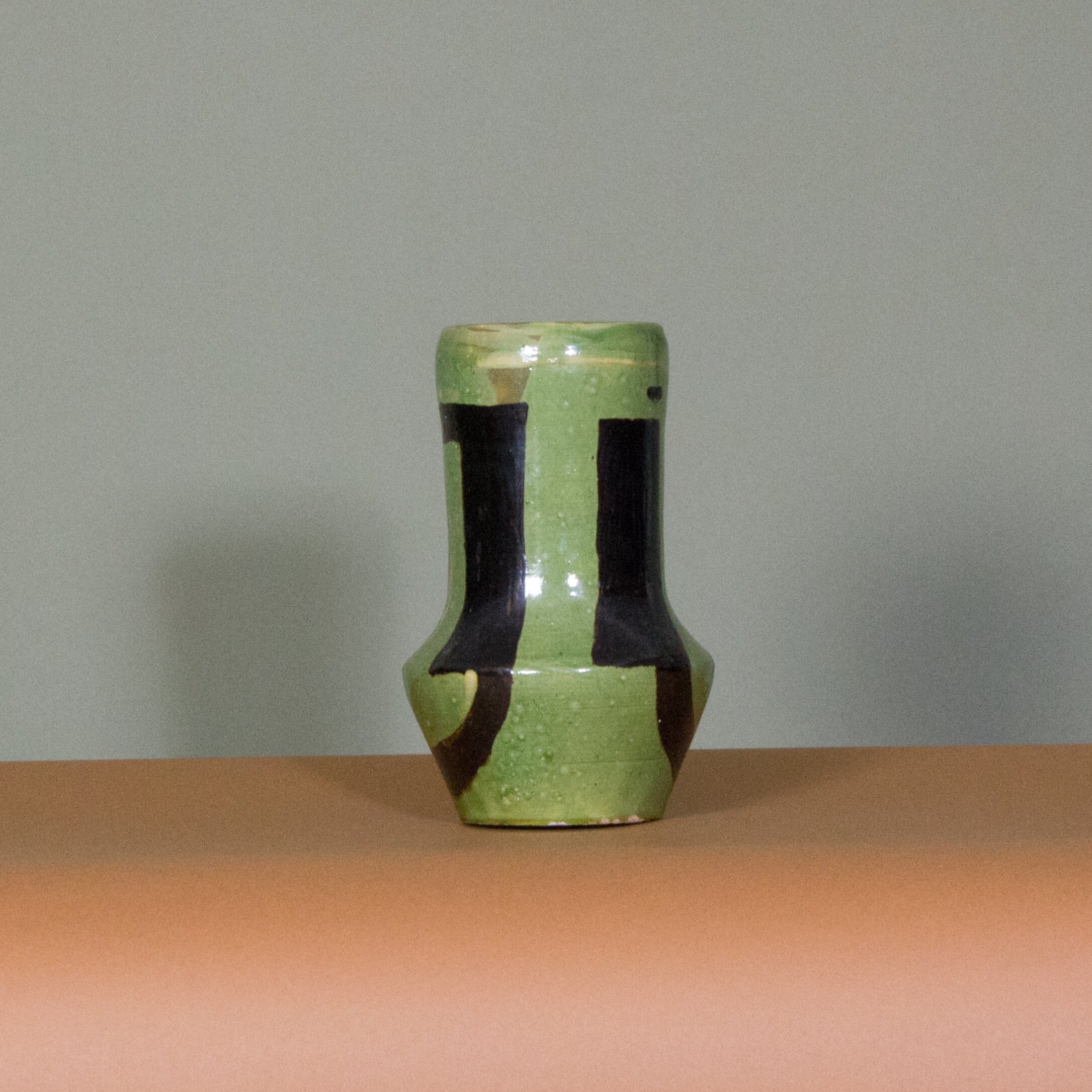
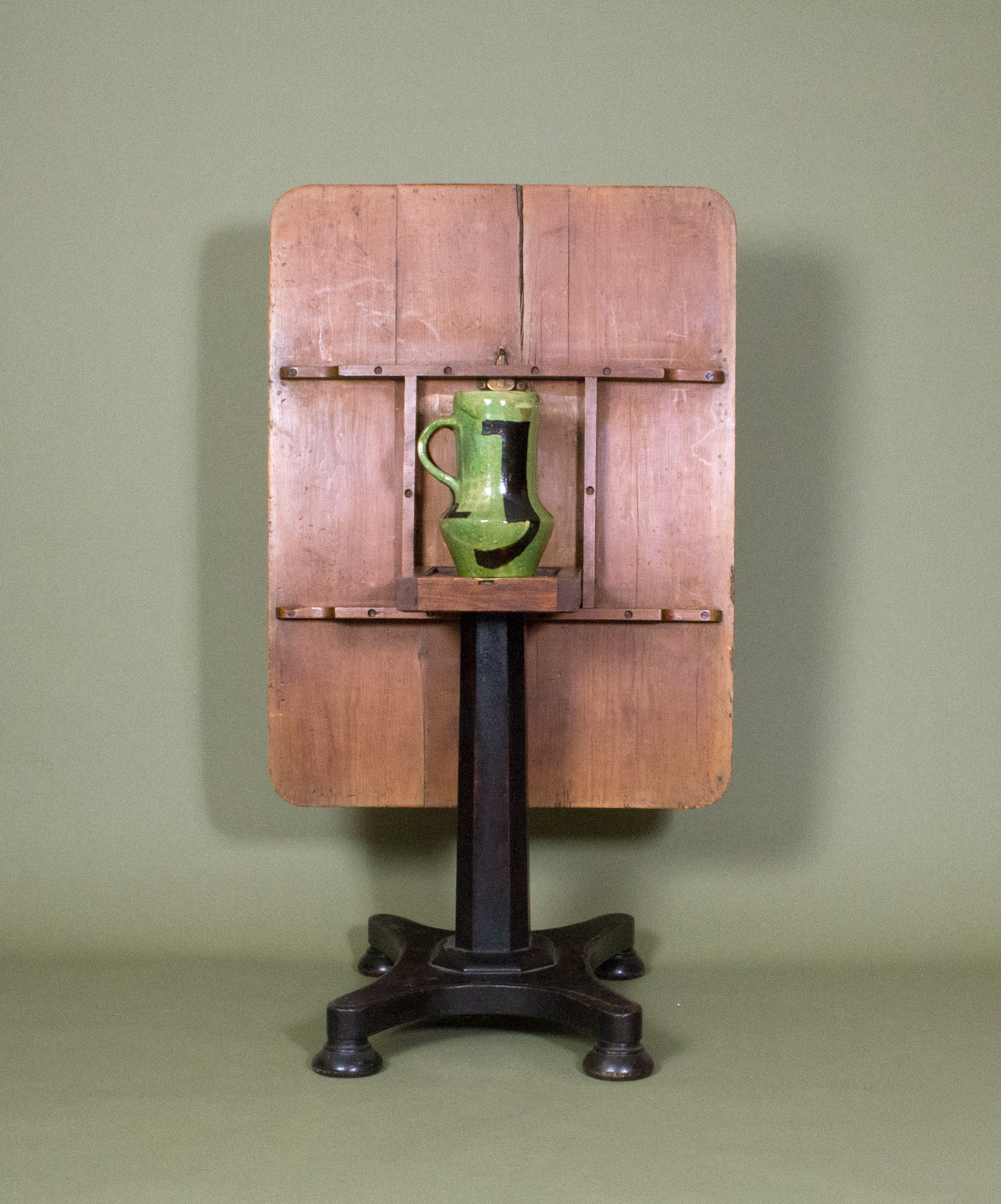
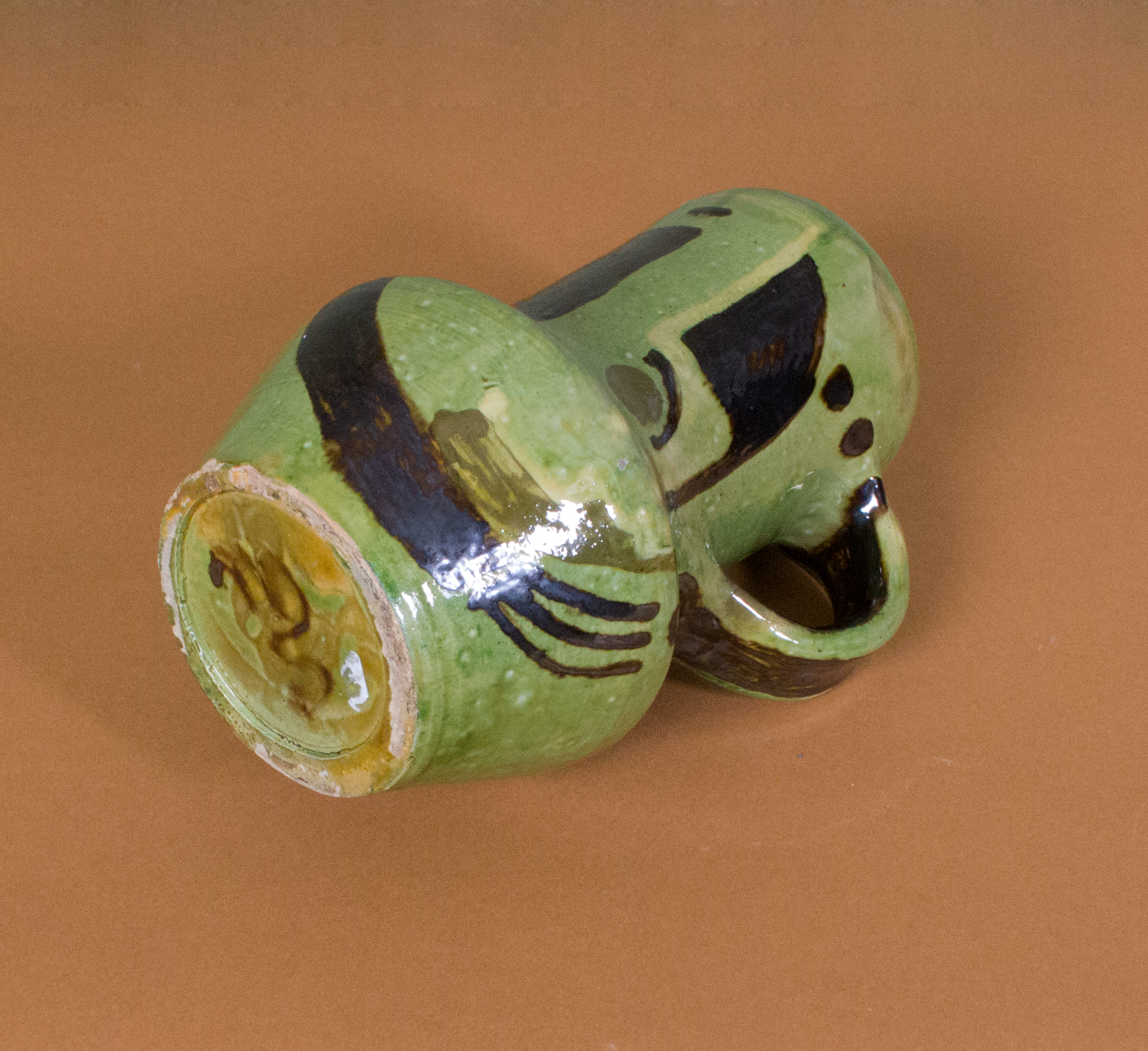
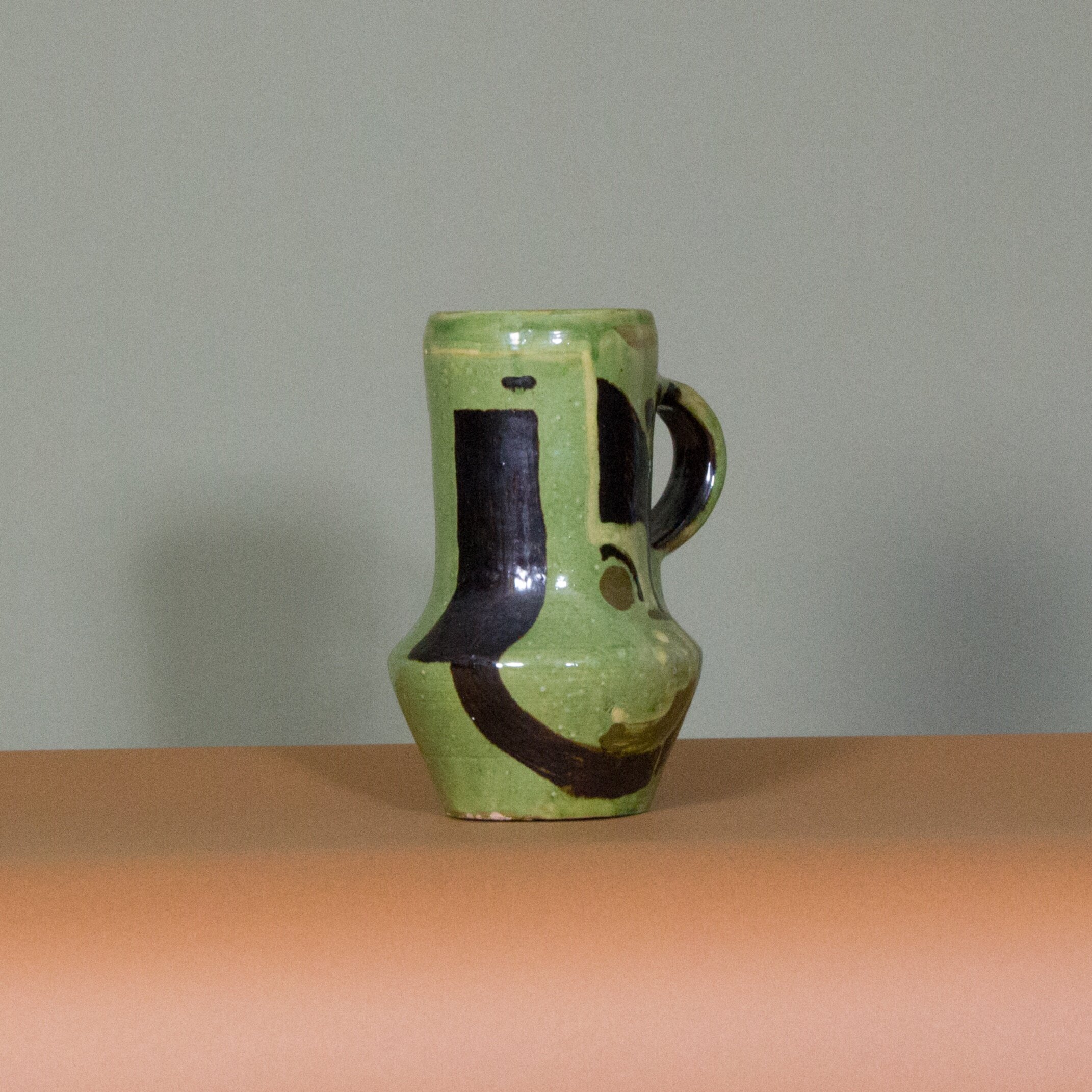
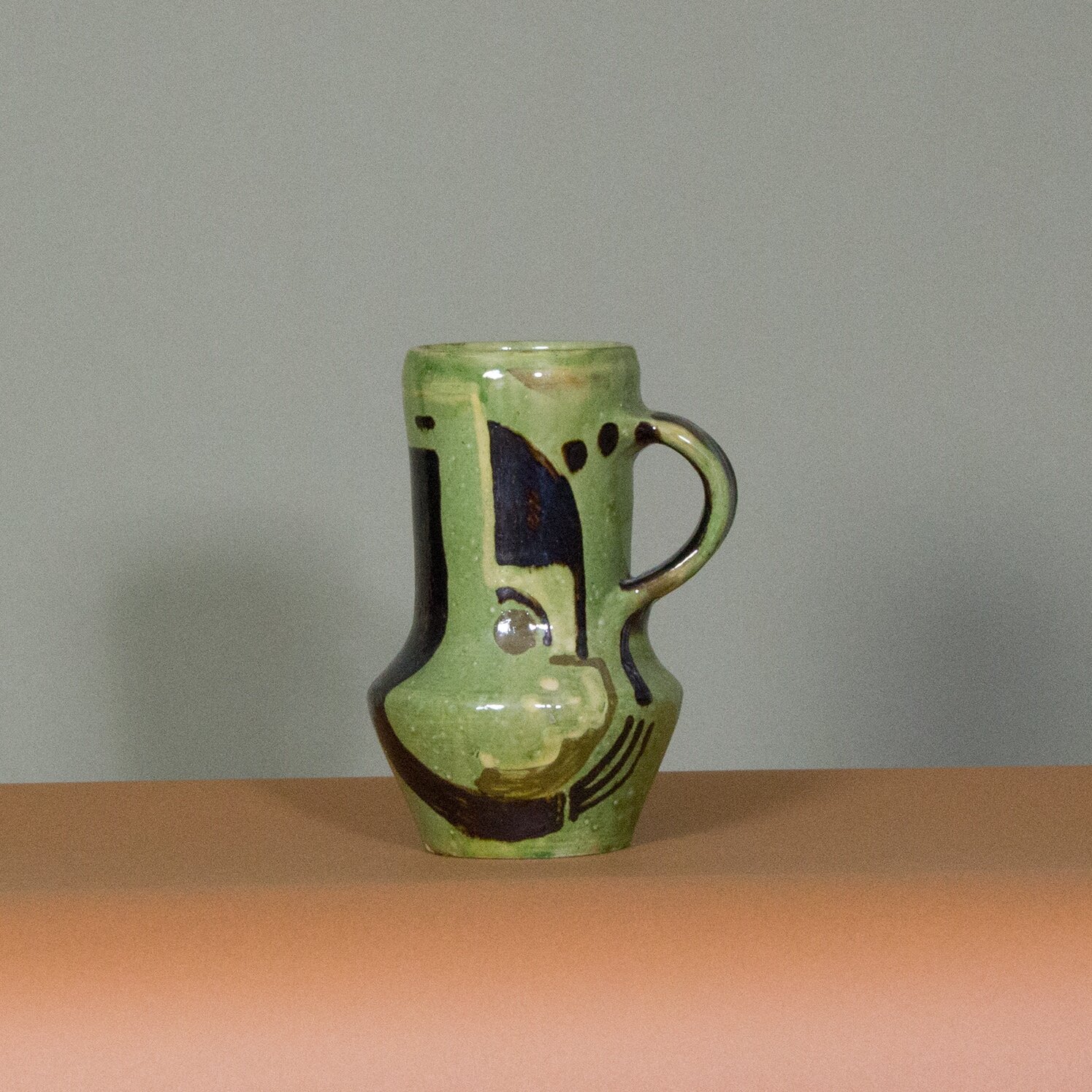
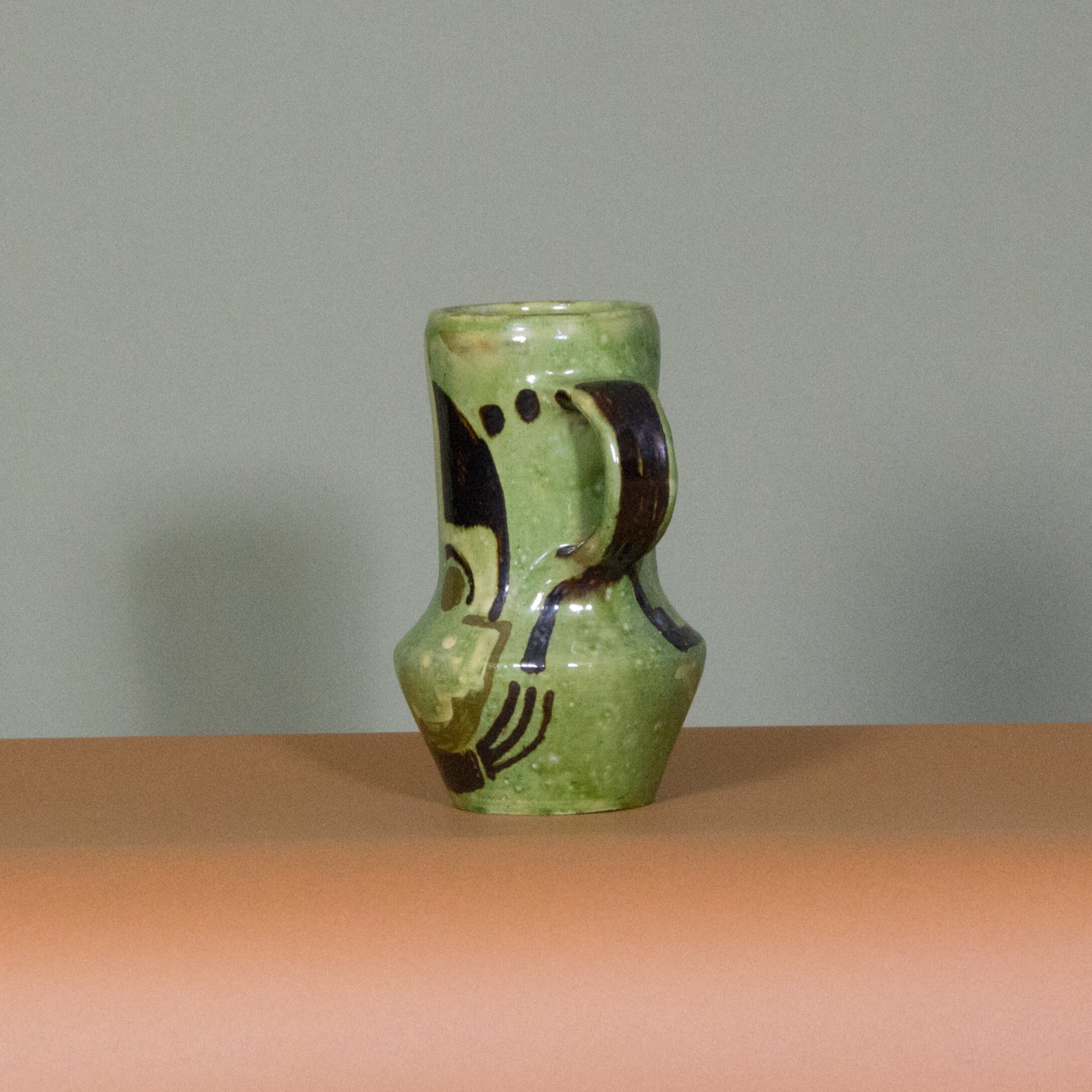
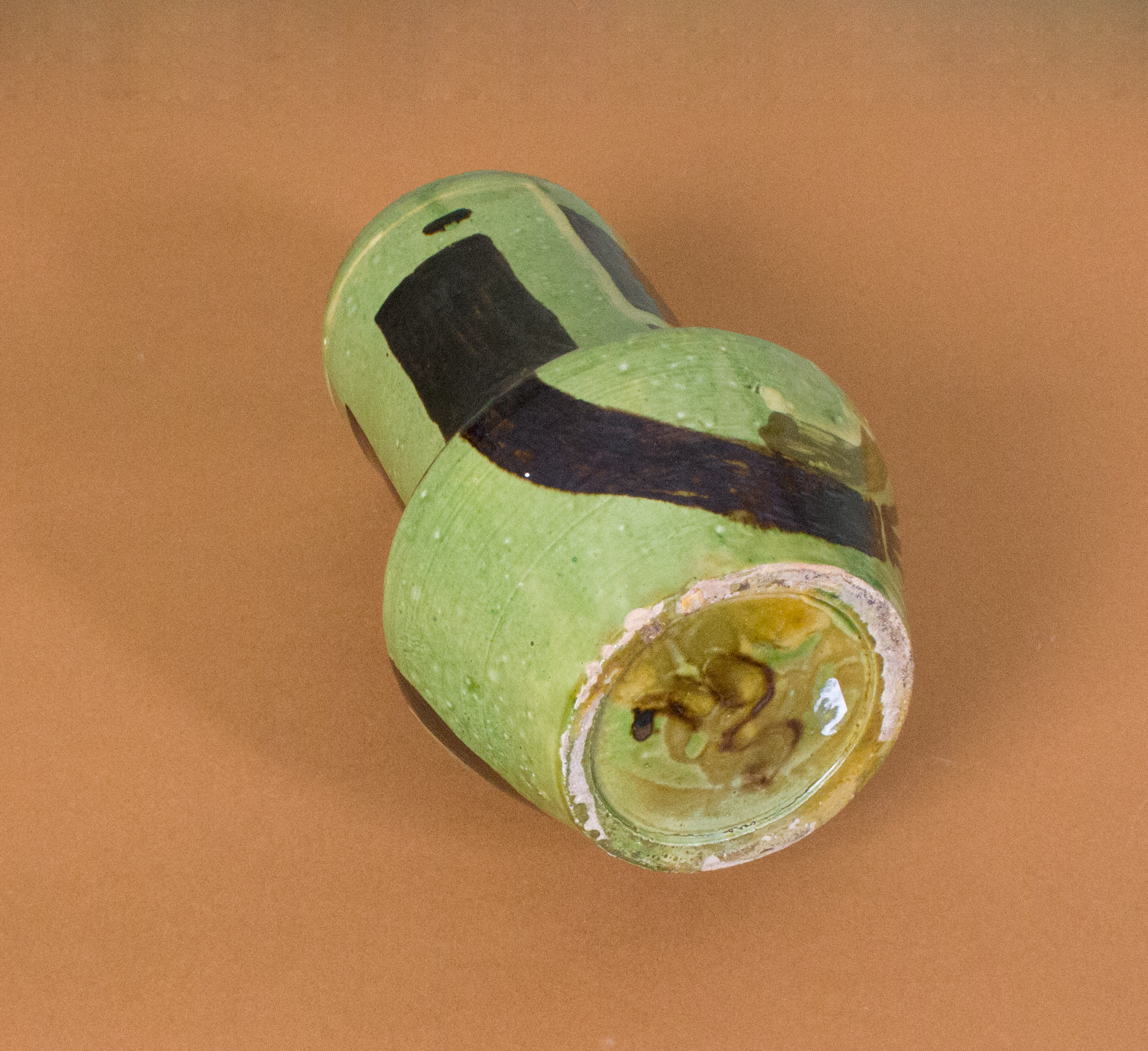
Vase-pichet à décor cubiste, Geneviève de Cissey
Grand vase-pichet vert à décor cubiste en terre vernissée
Geneviève de Cissey
Circa 1955-1958
Signé d’un monogramme MS pour Moly-Sabata
H 28 x 22 X 15 cm
Bon état général, quelques usures en bordure
Large green pitcher -vase with cubist decoration in glazed clay
Geneviève de Cissey
Circa 1955-1958
Signed by the monogram MS
H 28 x 22 x 15 cm
Good general condition, some wear and tear along the edges
Pour lire l’article relatif à la colonie d’artistes de Moly-Sabata, c’est par ici
Geneviève de Cissey étudie aux Beaux-Arts de Dijon où elle commence à pratiquer la céramique. C’est en allant en stage auprès d’Anne Dangar qu’elle découvre la colonie artistique de Moly Sabata, fondée par Albert Gleizes.
Ses séjours à Moly ainsi que sa correspondance suivie avec Anne Dangar lui permettent d’acquérir toutes les notions théoriques élaborées par Albert Gleizes en plus de la dimension pratique expérimentée en atelier.
En 1955 elle travaille dans l'atelier de Paquaud à Roussillon et après le départ de Moly de la famille Libert, elle décide de s’installer à son tour dans l'atelier resté vacant. Elle y travaille avec Lucie Deveyle décédee l’année suivante, puis seule jusqu’en 1958.
En 1960, elle épouse Charles Dalban et s'installe à Ampuis, dans l’impasse Le Trière où elle poursuit dans la même direction , ses poteries de terre vernissée sont cuites au four à bois, décorées de motifs traditionnels et inspirés par l’oeuvre d'Anne Dangar.
Son atelier étant situé en plein centre-ville, elle finit par abandonner les cuissons au bois, en raison de nouvelle normes de sécurité dans les années 70 et de son cancer du sein qui la paralyse du bras droit.
Sa fille, Aguilberte Dalban travaille avec elle dans cet atelier où elle ne cuit qu’au four électrique.
To read the article about the Moly-Sabata artists' colony, click here.
Geneviève de Cissey studied at the Beaux-Arts in Dijon where she began to practice ceramics. It is while attending a training course with Anne Dangar that she discovered the artistic colony of Moly Sabata, founded by Albert Gleizes.
Her stays in Moly as well as her ongoing correspondence with Anne Dangar enabled her to acquire all the theoretical notions developed by Albert Gleizes in addition to the practical dimension experienced in the workshop.
In 1955 she worked in Paquaud's workshop in Roussillon and after Moly's departure from the Libert family, she decided to move in her turn to the vacant workshop. She worked there with Lucie Deveyle, who died the following year, then alone until 1958. In 1960, she married Charles Dalban and moved to Ampuis, in the impasse Le Trière, where she continued in the same direction. Her glazed earthenware pottery is fired in a wood-fired kiln, decorated with traditional motifs inspired by the work of Anne Dangar.
Her workshop being located in the town centre, she eventually gave up wood firing, due to new safety standards in the 70s and her breast cancer which paralysed her right arm.
Her daughter, Aguilberte Dalban works with her in this workshop where she only bakes in the electric oven.






